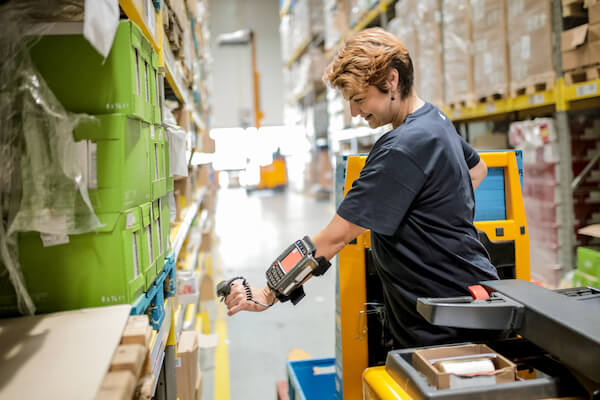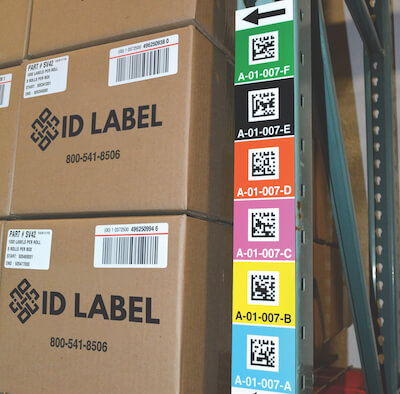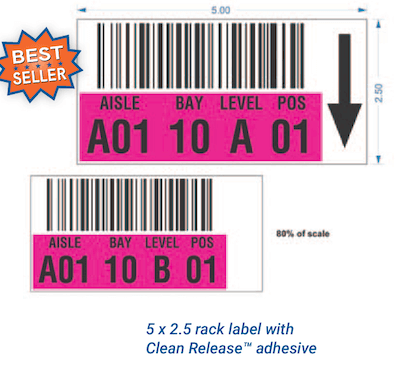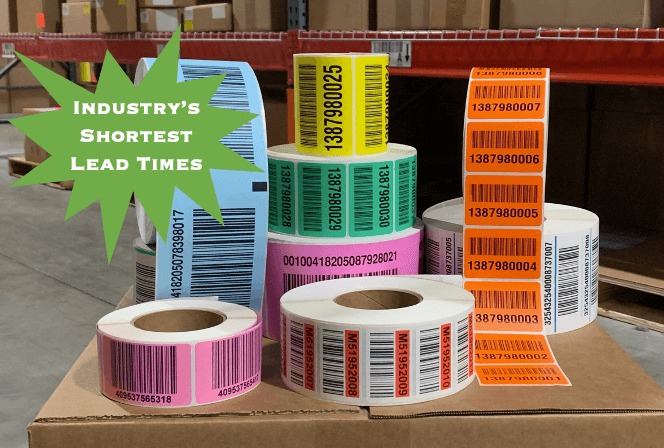3 Ways a Warehouse Management System with Proper Labeling Can Improve Your Operation
To meet operational challenges, more organizations have been transitioning to warehouse management systems (WMS) to improve inventory visibility, traceable materials, space optimization and productivity. This technology has become even more valuable with the industry’s recent historic supply chain disruptions.
A recent survey of supply chain executives found that 56% of respondents increased their investment in the past year to help combat disruptions, with 57% investing in technology.

 “Implementing the best barcoding system for your WMS can significantly improve product traceability and operational efficiencies. This allows you to quickly and correctly identify your inventory, keep tabs on when you need to order material, keep track of orders, and tell you what is currently in production.”
“Implementing the best barcoding system for your WMS can significantly improve product traceability and operational efficiencies. This allows you to quickly and correctly identify your inventory, keep tabs on when you need to order material, keep track of orders, and tell you what is currently in production.”

Using Barcoding to Get the Most Out of Your WMS
“By pulling real-time data, you can improve warehouse management and optimization by keeping track of workers and getting ahead of orders,” said Jean Pang, business development manager at ID Label. “This is especially valuable as the industry faces high turnover rates. A properly implemented WMS can help one person essentially do the work of three.”
Pang notes that barcoding plays a key role in getting the most out of a WMS. The labels and signs pair with mobile scanning technology, the warehouse management software and a well-planned layout and numbering scheme. “Each part is reliant on the others to maximize operational efficiency,” she said. “The software needs our labeling products to capture critical data like location details, serial and lot numbers and key dates.”
Profitability
By establishing a WMS in your warehouse, you will have the advantage of better lead times for orders and keeping up with demand through improved warehouse planning. As noted, however, a WMS requires proper labeling to truly perform and help operators overcome common warehouse challenges.
ID Label can deliver barcodes of various sizes, densities, and orientations with popular symbologies that meet today’s complex industrial standards. This includes 2D barcodes, which can contain vast amounts of information stored in the WMS.
Proper label installation is key. “During an installation, it’s easy to put a label out of sequence, and if it’s not caught promptly, you’ll find yourself redoing the whole labeling process,” said Pang. “Using our services helps ensure an efficient, error-free label installation, which can protect the end-user from costly reinstallations.”


Productivity
Implementing the best barcoding system for a WMS can significantly improve product traceability and operational efficiencies. This allows you to quickly and correctly identify your inventory, keep tabs on when you need to order material, keep track of orders, and tell you what is currently in production. A well-integrated WMS will also support warehouse robotics for better time management and optimization.
Having this kind of technology system in place allows warehouse operators to keep up with demand while helping maximize warehouse productivity. With the right barcode labeling and scanning system, warehouse managers can reduce the time it takes for employees to find and pick items and decrease the chance of inventory getting lost or misplaced.
Flexibility
A well-implemented WMS will account for the modern flexibility that every warehouse requires. With this robust data, you will get real-time information that will help you shape and reshape your warehouse layout efficiently, shaving valuable minutes off your employees’ daily tasks.
ID Label offers innovative solutions that provide greater flexibility, such as Clean Release™ repositionable labels, Beam Renew™ relabeling solution, and preprinted pallet/LPN labels. Our LPN labels work with your warehouse management system to help you track products and materials from the moment they enter the warehouse until they leave.
“Clean Release labels are repositionable and allow manufacturers to easily relabel rack locations and containers with new barcode data for years, whereas Beam Renew labels apply directly over old or damaged labels without the time and expense of scraping, cleaning, or painting,” Pang said.
Having the flexibility provided by custom warehouse labeling solutions to support a WMS will allow warehouse operators to better serve customers and employees to make sure they have the resources they need to handle an increase in demand.



The ID Label Advantage
ID Label manufactures extremely durable warehouse labels. Our materials have been tested and used in warehouse operations around the globe.
We also provide warehouse signage and turnkey nationwide installation services to provide a complete solution to our many clients who rely on us for all their warehousing needs.
Interested in learning more? Contact us today.
Tags
Recent Posts
- How to Remove a Rack Label: A Step-by-Step Guide
- Eliminate the Hassle of Removing Outdated or Damaged Warehouse Labels
- The Essential Role Labeling Plays in Food Traceability
- Ask the Expert: Should I Choose Paint or Tape to Mark My Warehouse Floors?
- Scott Bender Joins ID Label as Vice President of Sales